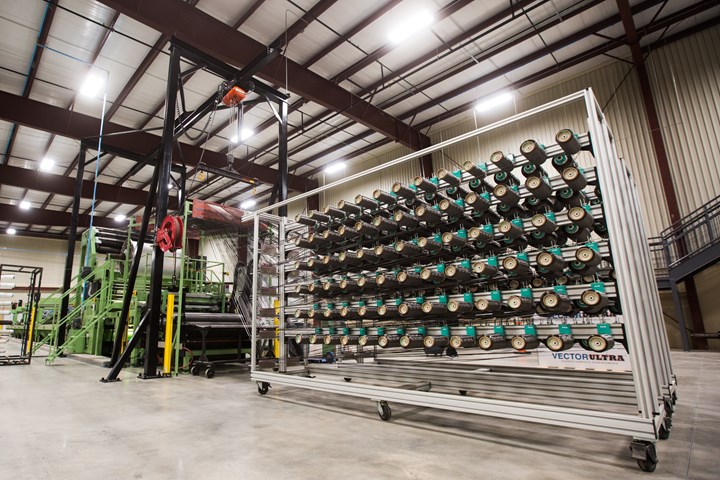Optimized fiber reinforcements, fabrics, NCFs
In this Digital Demo, Vectorply provides an overview of its fiber formatting capabilities and technical support operations.
In this Digital Demo, Trevor Gundberg, vice president of composites engineering at Vectorply Corp. (Phenix City, Ala., U.S.), demonstrates the company’s capabilities as a formatter of fiber reinforcements for a variety of composites manufacturing processes. Gundberg reviews the company’s formatting capabilities, which includes biaxial, quadaxial and stitch-bonded noncrimp fabrics (NCFs) using a variety of fiber types including carbon, glass, natural, aramid and basalt. The Digital Demo also summarizes Vectorply’s abilities to produce hybrid fabrics.
Gundberg explains Vectorply’s Road to Optimization, a step-by-step process in which the company’s engineering team works with customers to evaluate and assist in laminate design and development. In this process, Vectorply helps customers choose the optimal manufacturing process and fiber for their product. Manufacturing processes for which Vectorply optimizes fibers include infusion, resin transfer molding, pultrusion, compression molding and filament winding.
This Digital Demo also reviews Vectorply’s Vectorlam laminate design software, which helps customers compare physical and mechanical fiber properties such as stiffness, weight, strength and cost. Customers can access this software at vectorlam.com and either work with the engineering team or create their own options for their process.

Photo Credit: Vectorply Corp.
Related Content
-
Bioabsorbable and degradable glass fibers, compostable composite parts
ABM Composite offers sustainable options and up to a 60% reduction in carbon footprint for glass fiber-reinforced composites.
-
Owens Corning initiates review of strategic alternatives for glass fiber business
Owens Corning considers alternative options like a potential sale or spin-off as part of its transformative move to strengthen its position in building and construction materials.
-
Composites manufacturing for general aviation aircraft
General aviation, certified and experimental, has increasingly embraced composites over the decades, a path further driven by leveraged innovation in materials and processes and the evolving AAM market.












